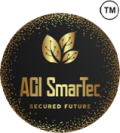
Introduction
The Internet of Things (IoT) landscape has long been fragmented by proprietary ecosystems and incompatible protocols. For consumers, this has meant difficult choices between competing platforms like Amazon Alexa, Google Home, and Apple HomeKit, often resulting in homes filled with devices that simply couldn’t communicate with each other. However, the Matter standard is now reshaping this landscape, offering a unified solution that promises to revolutionize smart home technology.
What is Matter?
Matter (formerly known as Project CHIP – Connected Home over IP) is an open-source connectivity standard backed by major tech companies including Apple, Google, Amazon, and Samsung. Officially launched in late 2022, Matter has gained significant traction throughout 2023 and 2024, with widespread adoption now becoming evident across the consumer IoT market.
The standard creates a common language for smart home devices to communicate locally without requiring cloud connections, regardless of which company manufactured them. This protocol runs on Wi-Fi and Thread networks and is built using proven technologies such as Bluetooth Low Energy.
Why Matter Matters
Matter addresses several critical pain points in the IoT ecosystem:
- Interoperability: Devices from different manufacturers can now work together seamlessly. Your Amazon Echo can control your Apple HomeKit lights, and your Google Home can manage your Samsung SmartThings sensors.
- Simplified setup: Matter devices feature a standardized onboarding process, making installation and configuration more straightforward for consumers.
- Local control: The standard prioritizes local device-to-device communication, reducing cloud dependencies and enhancing privacy, security, and reliability.
- Future-proofing: As an open standard with broad industry support, Matter offers consumers confidence that their devices will maintain compatibility as technology evolves.
Market Impact
The impact of Matter is already being felt across the IoT landscape. According to recent industry reports, over 60% of new smart home devices shipped in Q1 2025 were Matter-certified, representing a dramatic shift from just 15% in early 2023.
Major retailers now prominently display Matter certification badges on product packaging, and consumers increasingly look for this compatibility when making purchasing decisions. The standard has effectively become a requirement for new product launches in categories like lighting, security, and environmental controls.
Real-World Applications and Benefits
Energy Management
Matter-compatible energy monitoring systems now allow homeowners to integrate diverse components into comprehensive home energy management solutions. Smart thermostats can communicate with solar inverters, battery storage systems, and EV chargers to optimize energy usage based on real-time pricing and availability.
Aging in Place
The healthcare sector has embraced Matter as a foundation for “aging in place” technologies. Fall detection sensors, medication reminders, and vital sign monitors can now integrate with mainstream smart home ecosystems, making these solutions more accessible and easier to deploy for families supporting older adults.
Enhanced Security
Home security has been transformed by Matter’s interoperability. Motion sensors, door/window contacts, cameras, and alarm systems from different manufacturers can now function as a cohesive system. This allows homeowners to select best-in-class components rather than being locked into a single vendor’s ecosystem.
Challenges Ahead
Despite its success, Matter still faces obstacles:
- Legacy device support: Millions of existing smart home devices lack Matter compatibility, and many cannot be updated through firmware. This creates transition challenges for consumers with established smart homes.
- Category expansion: While Matter now covers most common device types, specialized categories like robot vacuums and appliances are still being incorporated into the standard.
- Advanced features: Some manufacturers have expressed concern that the standardization process may limit innovation or unique selling points.
What’s Next for Matter
The Matter Working Group has announced ambitious plans for the next two years:
- Matter 2.0 is expected to expand support to additional device categories including major appliances, robot vacuums, and more sophisticated environmental controls.
- Enhanced semantic understanding will allow devices to communicate more contextual information about their status and capabilities.
- Improved energy management features will help homeowners track and optimize power consumption across all compatible devices.
Conclusion
Matter represents a significant evolution in the IoT landscape, finally delivering on the promise of truly interconnected smart homes. As adoption continues to accelerate, consumers can expect simplified setup experiences, greater device compatibility, and more robust functionality from their smart home systems.
For those considering smart home upgrades, seeking out Matter-certified devices is increasingly becoming the sensible choice. This standard not only simplifies today’s smart home experience but also provides a foundation for future innovation without the limitations of closed ecosystems.

